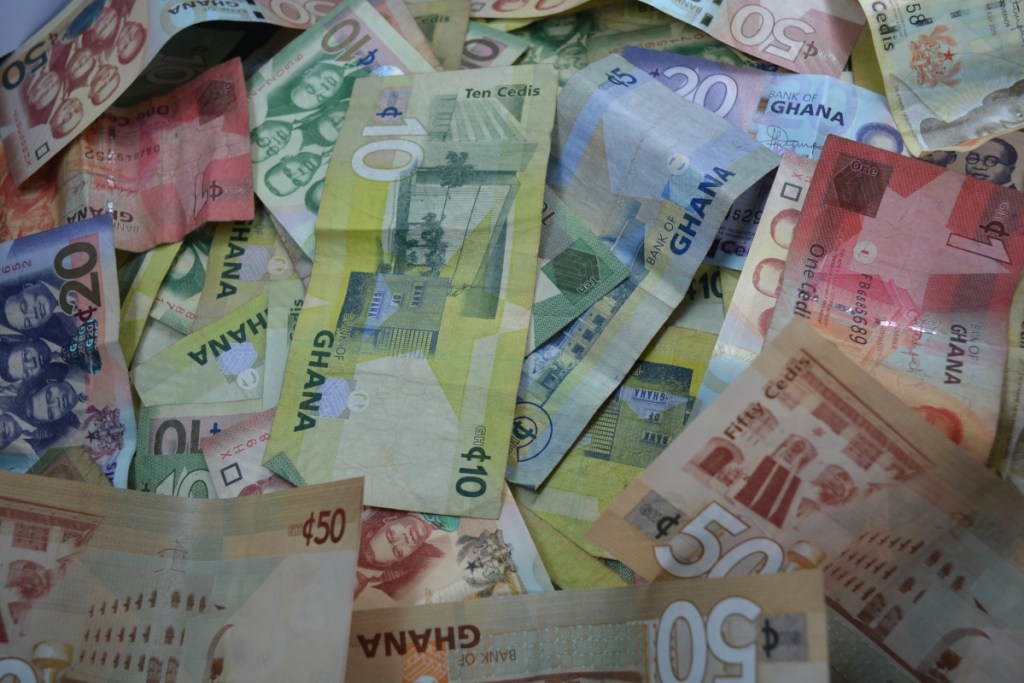GH¢1 was exchanged for $1.17 in 1965

Ghana is preparing to commemorate a significant milestone in its economic history—the 60th anniversary of the introduction of the cedi as the country’s sole legal tender.
Slated for July 19, 2025, the Bank of Ghana (BoG) has announced a yearlong calendar of events to honour the currency that has not only served as a medium of exchange but also a powerful symbol of sovereignty and national transformation.
The cedi was introduced on July 19, 1965, to replace the Ghana Pound.
At its inception, the cedi held greater value than the US dollar, with an exchange rate of GH¢1 to $1.17.
The cedi was also equivalent to eight shillings and four pence (8s 4d).
Today, nearly sixty years later, the story has dramatically changed.
As of December 31, 2024, the cedi traded at GH¢14.701 to $1—after redenomination in 2007.
Without redenomination, the figure stands at a staggering GH¢140,701 to $1.
A currency of sovereignty
The introduction of the cedi in 1965 marked a deliberate and symbolic shift from Ghana’s colonial past.
By adopting the decimal system and moving away from the British West African Pound, the country asserted full control over its monetary policy for the first time since gaining independence in 1957.
Derived from the Akan word “sedie” (cowrie shell), the name “cedi” paid homage to the traditional pre-colonial form of currency, while the pesewa linked Ghana’s currency system to the gold-dust standard once used across the region.
The first cedi was pegged at 8 shillings and 4 pence, and the earliest notes bore the image of Ghana’s first President, Dr. Kwame Nkrumah, reinforcing its place in the national identity.
A rocky road of depreciation
Despite its promising start, the cedi has undergone severe depreciation over the decades.
At independence, the West African Pound exchange rate was 73 pesewas to $1.
After the 1965 introduction of the cedi, it still maintained a stronger position than the US dollar.
But by 1983, the exchange rate had fallen to GH¢52.6 to $1.
In 1992, it stood at GH¢520.8 to $1.
By 2000, the value had further dropped to GH¢7,047 to $1.
After redenomination in 2007, which slashed four zeros from the currency, the rate adjusted to $1 equaling GH¢0.92 (or GH¢1 = $1.09).
Yet, the depreciation trend persisted.
By 2008, the dollar sold at GH¢1.19 (GH¢11,900 without redenomination).
In December 2013, it reached GH¢2.20 (GH¢22,000), and by March 2014, it had weakened further to GH¢2.63 (GH¢26,326). At the end of 2024, the cedi stands at GH¢14.701 per dollar—or GH¢140,701 if the 2007 redenomination were reversed.
Inflation and the limits of monetary policy
One of the chief culprits behind the cedi’s steady decline has been inflation.
Ghana recorded inflation rates of less than 1% in 1965.
By contrast, inflation at the end of 2024 stood at 23.8%.
The years following independence were marked by attempts to maintain a fixed exchange regime.
Between 1965 and 1983, successive governments clung to this model, but the strategy proved unsustainable.
Fiscal and monetary indiscipline led to inflation, foreign exchange shortages, black market activities, and eventual collapse of the fixed rate regime.
Demonetisation and political transition
The cedi’s history is also intertwined with political upheavals. After the overthrow of Dr. Nkrumah in 1966, the new regime introduced the “New Cedi” on February 7, 1967, converting ¢1.20 to N¢1.00, largely to erase Nkrumah’s legacy from the national currency.
On March 9, 1979, the government embarked on a radical demonetisation effort.
currency notes were recalled and exchanged for new ones under strict terms.
Citizens with more than ¢5,000 saw their money sharply discounted—30% for holdings up to ¢5,000, and 50% for amounts beyond that.
This was a bold, though controversial, move aimed at curbing black market trade and controlling the money supply.
A legacy of redesigns and denominations
Over the decades, the BoG has adapted to inflation and economic shifts by regularly updating the design and denominations of the cedi.
From the initial notes of ¢1 to ¢50, the currency expanded to include ¢100, ¢500, ¢1,000 and ¢50,000 denominations by the late 1990s.
The 2007 redenomination was one of the most significant reforms in the cedi’s history.
It converted ¢10,000 into GH¢1.00, simplifying accounting and restoring confidence in the national currency.
Presently, the Ghana cedi is available in denominations of GH¢1, GH¢2, GH¢5, GH¢10, GH¢20, GH¢50, GH¢100 and GH¢200, while coins range from 1 pesewa to GH¢2.
Celebrating 60 Years: Reflection and forward march
In celebration of the cedi’s 60th anniversary, the BoG has planned a series of national events running from July to December 2025.
These include official launch ceremonies, public exhibitions, stakeholder engagements, and educational campaigns.
The Bank says this moment of reflection is also a call to action—a reminder that the integrity of the national currency must be protected through responsible policy and national unity.
“The anniversary offers an opportunity for Ghanaians to reflect on the history of the cedi, to celebrate the progress made, and to reaffirm our collective responsibility to protect the value and integrity of the currency,” a statement from the BoG said.
Digital horizons and the e-Cedi
As the global economy turns increasingly digital, the future of the cedi will rest on its ability to evolve.
The BoG is actively piloting the e-Cedi, a Central Bank Digital Currency (CBDC) aimed at increasing financial inclusion and supporting Ghana’s digitalisation goals.
BoG has also intensified its commitment to price stability, a necessary foundation for building long-term investor confidence and public trust.
It aims to harness digital payments, enhance monetary policy tools, and develop a resilient ecosystem that supports both traditional and digital currencies.
National pride and a shared future
The cedi’s journey is inseparable from Ghana’s broader story. From its early beginnings rooted in post-colonial aspirations to its current digital ambitions, the cedi reflects both the challenges and triumphs of Ghanaian nationhood.
The 60th anniversary celebration is not just ceremonial.
It is an invitation to every Ghanaian to renew their stake in the national project—to honour the past, acknowledge the present, and shape a future of shared prosperity and financial sovereignty.
Further details about Cedi@60 activities will be unveiled in the coming weeks.
But what remains clear is that the currency’s tale—its conception, its struggles, its transformations—is fundamentally the tale of Ghana itself.


